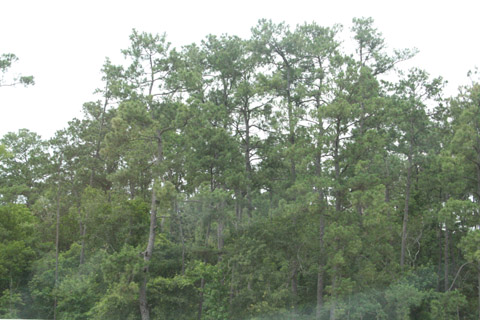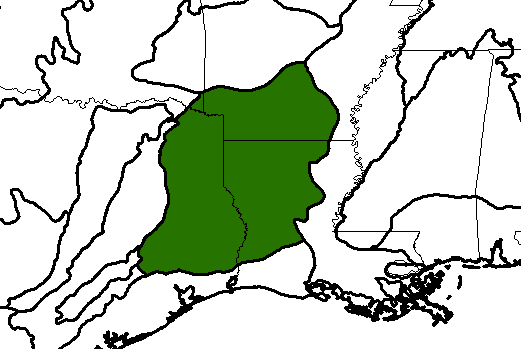
near Vidor, Texas
Bioimages home (click on an image to enlarge)
view
this page in its intended navigation context
Piney Woods forests
(WWF
ecoregion NA0523)

near Vidor, Texas

Source of bioregions data:
Olson, D. M. and
E. Dinerstein. The Global 200: Priority ecoregions for global conservation. (PDF
file) Annals of the Missouri Botanical Garden 89:125-126.
Distinctiveness (1=highest,4=lowest): 2 (regionally
outstanding)
Originally dominated by longleaf pine (Pinus palustris), that species
has to a large extent been replaced by shortleaf (P. echinata) and
loblolly (P. echinata) pines in plantations.*
Conservation Status (1=most endangered, 5=most
intact): 2 (endangered)
Only 3 percent of the habitat is intact. Logging of the original forest
and fire suppression along with urbanization has been the major cause of habitat
loss.*
 Pinus palustris (longleaf pine)
(c) 2005 Lisa Kelly
Pinus palustris (longleaf pine)
(c) 2005 Lisa Kelly
 Pinus echinata
(shortleaf pine)
Pinus echinata
(shortleaf pine) Pinus taeda
(loblolly pine)
Pinus taeda
(loblolly pine) Quercus
s
Quercus
s Ilex
vomi
Ilex
vomi Cornus
florida
(flowering dogwood)
Cornus
florida
(flowering dogwood) Nyssa
sylvatica
Nyssa
sylvatica Liquidambar
styraciflua
Liquidambar
styraciflua Magnolia
virginiana
Magnolia
virginianaAssociated habitats
Second-growth forest near Pine Mills, Wood County, Texas




hires
hires
hires
hires
(c) 2011
Daphne R. Hatcher
Roadside forest, near Vidor, Texas
* Ricketts, T.H., E. Dinerstein, D.M. Olson, C.J. Loucks, et al. (1999) Terrestrial Ecoregions of North America: A Conservation Assessment. World Wildlife Fund - United States and Canada. Island Press, Washington, D.C. pp. 277-280.
Except as noted, images copyright 2002-2011 Steve Baskauf - Terms of use